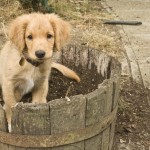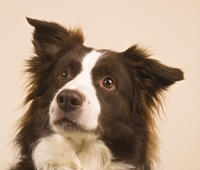Teaching Your Dog Tricks
Teaching Your Dog Tricks
Teaching your dog tricks is fun. That’s not the only reason it’s a good idea though. It also helps you to build a stronger relationship with your dog and can go a long way towards helping to eliminate unwanted behavior before it starts. It’s not true that you can’t teach an old dog new tricks either. No matter how old your dog is, it can learn a few simple tricks quickly and easily. As with any type of dog training exercise, the keys are consistency and patience. You can quickly have a better behaved dog with an impressive repertoire of tricks with which to impress your friends.
Working Hard
Dogs want to work. As domesticated pets, their opportunities for this type of action is limited. Teaching a dog a trick means that it must perform a particular action or set of actions on cue. As far as the dog’s concerned, that’s the same as giving it a job. And a working dog is a happy dog. Plus, working with you to perform and learn new tricks means that the dog is getting your attention and praise. This kind of positive reinforcement is the best way to build a strong relationship with your dog.
Tricks and Obedience
Of course, obedience training is a great way to build this type of relationship too. Teaching tricks though can be a great way to supplement and reinforce your obedience training. It’s also a good way to continue this type of interaction after obedience training is no longer necessary. Making time for your dog will contribute greatly to their well being and help them continue to thrive.
You Do Have Time
It doesn’t take a huge time commitment to teach your dog a few fun tricks. You just have to be consistent and patient. Plus, you’ll probably start looking forward to your sessions as much as the dog. It’s a great feeling for you too when you see your dog master a trick that you taught it. You’ll develop a much stronger bond that will translate to other situations as well.
Standard Equipment
There are a few training aids that you’ll be wise to invest in before you try to teach your dog tricks. You may already be familiar with them if you used them for obedience training. One of the most useful training aids is the clicker. This simple tool allows you to “capture” a particular action or behavior and get your dog to repeat it. It can be incredibly helpful when it comes to training your dog to do tricks. Healthy treats are also something you should have on hand. Aside from your praise, this is the best kind of direct positive reinforcement.
You and your dog can have a lot of fun together and build a much stronger relationship through the trick training process. You can put your dog to work without it feeling like work to you. You can also reinforce the tenets of obedience training and increase their effectiveness.
Claudie on September 29th 2010 in Dog Ownership, training Tips

